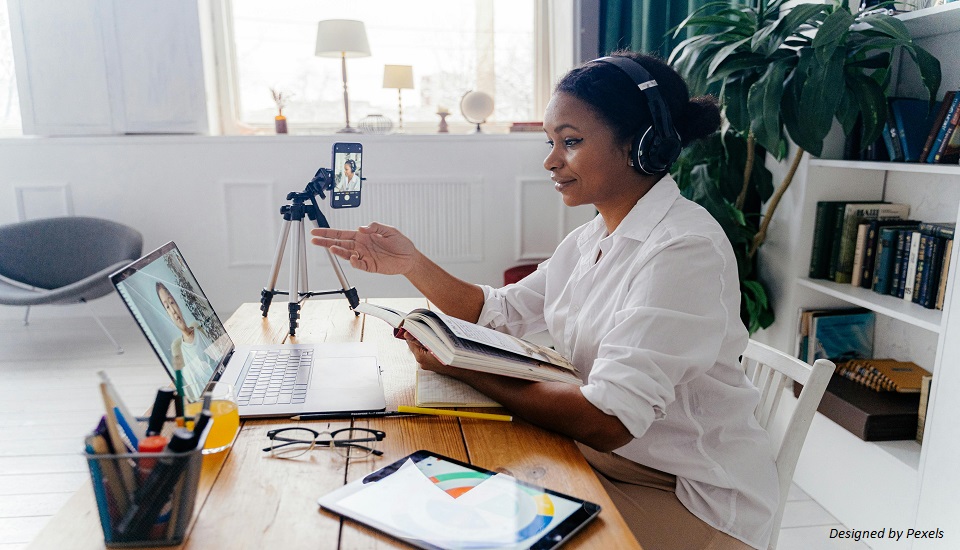5 Quick And Easy Ways To Set Up Your TEFL Office At Home
The market for online TEFL teaching is now larger than it has ever been. Teachers and students may share and study from multiple rooms using cell phones, tablets, and reliable home computers. It's fantastic. How is it done? How can a TEFL instructor set up the ideal workspace at home? What are some ways to make sure you don't just start working from a forgotten area of your kitchen and never leave? We're not here to dictate your lifestyle, but we offer tips to help you enjoy working from home. That way, you may be another contented home worker and be as productive as possible.
5 Tips ForSetting Up TEFL Home Office Easily
Here are five practical tips to help you set up your TEFL home office, ensuring both you and your students have a seamless learning experience:
1. Choose the Right Location
The first step to creating a successful home office is choosing the right location. Ideally, your teaching space should be in a quiet area with minimal distractions, both for you and your students. Look for a space in your home that is separate from areas with heavy foot traffic or family noise. If this isn’t possible, consider using noise-cancelling headphones and a microphone to enhance sound quality.
Lighting is another important factor when selecting a location. Ensure that your space is well-lit, preferably with natural light, as it can help maintain energy levels and improve the overall ambiance of your classes. Try to position your desk near a window, but avoid direct sunlight, which can cause glare on your camera. If natural light isn’t available, invest in a quality ring light or desk lamp to provide soft, even lighting for your face. Proper lighting can also make you appear more professional on camera, making it easier for students to engage with you.
2. Invest in Ergonomic Furniture
Start with a comfortable chair that provides good back support and allows for adjustable height and armrests. A chair with lumbar support will help keep your posture in check, reducing the risk of back pain.For your desk, opt for one that is spacious enough to accommodate your laptop or desktop computer, as well as any teaching materials or props you use during your lessons. If you use multiple screens, ensure your desk has ample surface area.
An adjustable sit-stand desk can also be a great investment if you prefer to alternate between sitting and standing while teaching.Don’t forget about your keyboard and mouse setup—make sure they are at a comfortable height to avoid straining your wrists. If you find yourself typing for long periods, consider investing in a mechanical keyboard or a wrist rest to prevent fatigue. A comfortable, ergonomic workspace will improve your efficiency and overall well-being.
3. Create a Professional Background
Your background plays a critical role in how students perceive you and the learning environment. A clean, uncluttered background ensures that your lessons remain the focal point, not distractions from your surroundings. Ideally, choose a neutral-colored wall or backdrop to maintain professionalism. If your space is limited and you can't access a perfect background, consider using a portable backdrop or curtain to create a uniform look.
If you want to add a personal touch or make the background more engaging, consider incorporating a few subtle elements like a world map, bookshelf, or motivational posters. Just be careful not to overcrowd the space, as a cluttered background can be distracting for students.Additionally, if you're teaching young learners, you can add props such as plush toys, colorful posters, or educational charts that align with your lesson plans. A lively background can help keep students engaged and make the learning experience more enjoyable.
4. Ensure Reliable Technology
Technology is the backbone of online teaching, so ensuring that your tech setup is reliable is crucial to delivering smooth lessons. Begin with your internet connection. A fast and stable internet connection is necessary for video calls, file sharing, and lesson delivery without interruptions. Consider using a wired connection over Wi-Fi to avoid any potential connectivity issues during lessons.
A laptop with a good camera and microphone is a must, as it will help you engage effectively with students. If you find that your built-in microphone and camera aren’t providing the best quality, you may want to purchase an external webcam and microphone for better audio and visual clarity.Headphones are also essential. Software tools also play a key role in your setup. Consider using interactive tools, such as virtual whiteboards, screen-sharing applications, or even games, to make lessons more engaging.
5. Organize Your Materials and Teaching Aids
An organized workspace will not only help you stay focused but also make your teaching more efficient. Start by creating a system for organizing your lesson plans, notes, and materials. Use binders or digital tools like Google Drive, Dropbox, or Evernote to keep everything easily accessible and well-structured.
If you use physical teaching aids like flashcards, whiteboards, or props, ensure that they are organized and within reach. You might want to set up shelves or drawer organizers to store your materials neatly, so you can quickly grab what you need during class without fumbling around. A clutter-free environment not only looks professional but will also help you stay prepared and calm during your lessons.
Bottom Line
After completing the Live Online TEFL Course, setting up a home office for TEFL teaching requires careful planning and consideration. As an online TEFL teacher, your workspace directly influences the quality of your lessons, so take the time to set it up properly and enjoy the benefits of a comfortable, efficient teaching space.
Happy teaching!
We believe education should be accessible for everyone. That’s why we don’t charge for our blogs. Find the right course that will help you in your career with us, contact us at - 1800–212–6400. You can mail us at act@asiancollegeofteachers.com




